On the Road is a weekday feature spotlighting reader photo submissions.
From the exotic to the familiar, whether you’re traveling or in your own backyard, we would love to see the world through your eyes.
Looks like a great week. It’s Albatrossity Monday and then we head to the Sinai Trail! 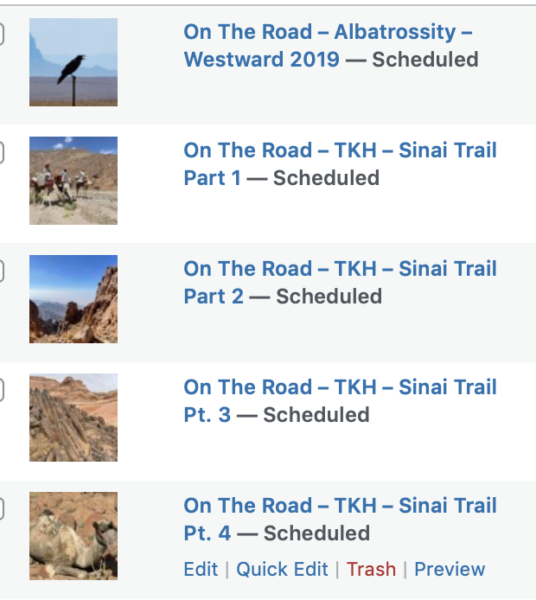
Albatrossity
This time of year, there are only a few kinds of birds to photograph here in Flyover Country, and sometimes minimal photons available to photograph them with. So I turn back to the archives to generate my On The Road posts, and dream of sunshine and travel and warmer weather.
Last Monday’s post, about a chase to see a bird that I did not find, seemed to resonate with folks, and it occurred to me that I have plenty of stories like that. So this is another one of those, but I’ll spoil the ending right away.
In the fall of 2019, I got in the car and headed to California to go on a pelagic bird-watching trip out of Monterey. My friend Debi Shearwater was retiring after many years of organizing and leading bird-watching excursions off the central California coast, and I wanted to go on a final voyage before she gave up that gig. If you ever saw the movie “The Big Year” (or read the book, perhaps), she was the basis for the character Annie Auklet (played by Anjelica Huston) in that film, and indeed, she is a character. Sadly, our trip was canceled by bad weather, so I will have no pelagic bird shots to share, but I did see many good birds and scenic places on the trip there and back.
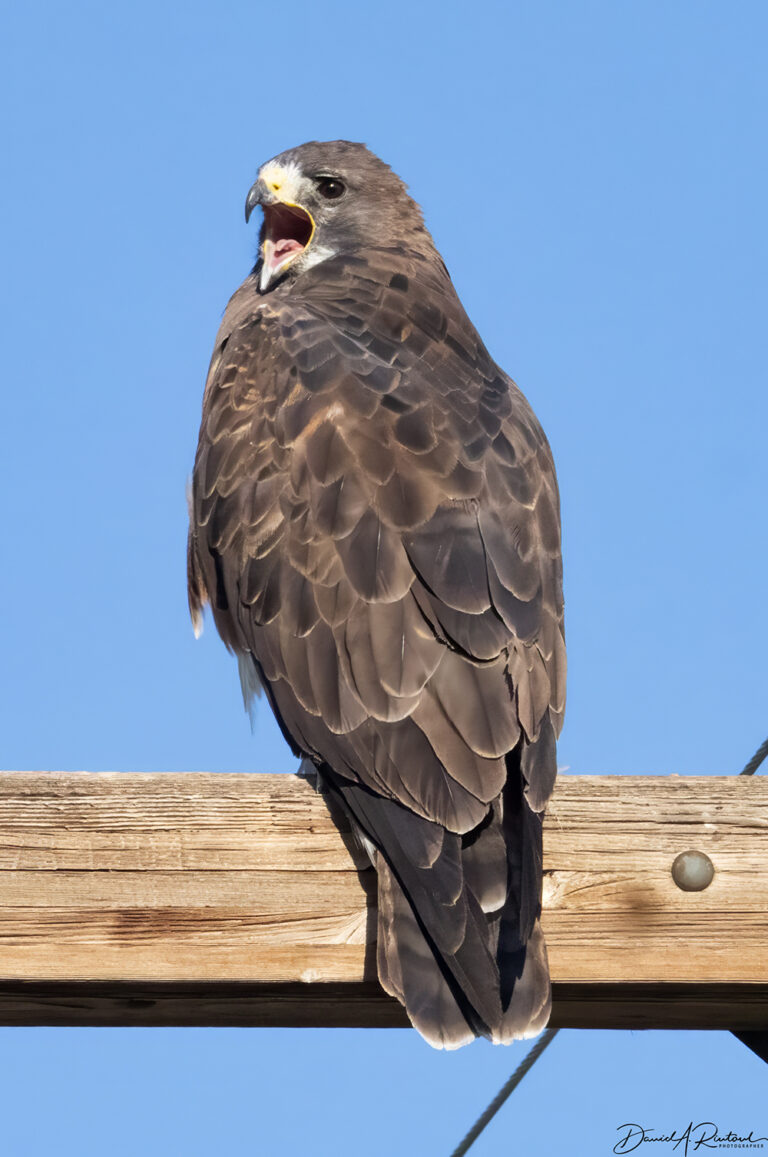
My first stop on trips west from here is often the San Luis Valley in southern Colorado; the Monte Vista and Alamosa refuges there can be very birdy, and it is a convenient (albeit long) day’s drive from my home in Manhattan. One of the attractions there in the fall is the large number of Swainson’s Hawks (Buteo swainsoni), which are a common hawk of the western US. At that time of year, they are starting to flock up and head south to the pampas for the winter. This handsome adult light-morph bird was telling me all about her plans for the trip south. Click here for larger image.
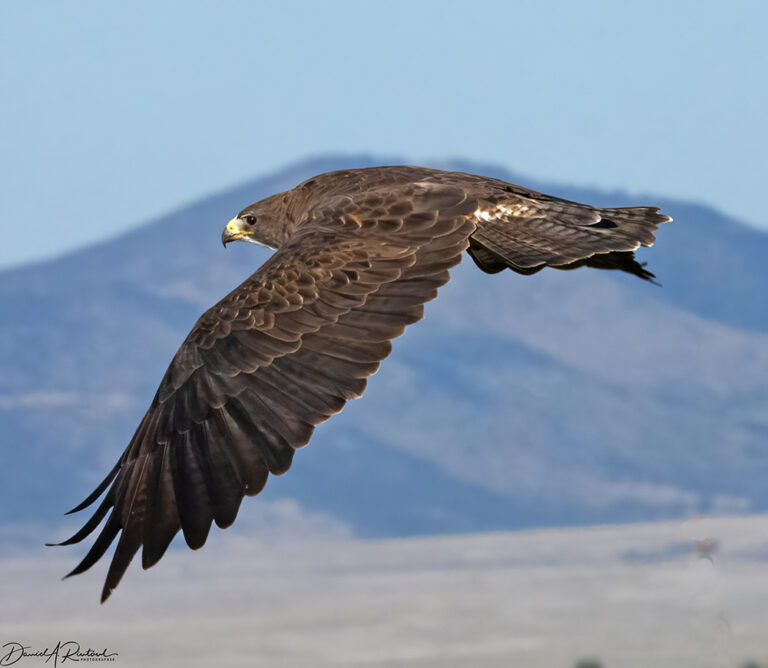
Swainson’s Hawks are nearly as large as Red-tailed Hawks, but have longer wings and are much more acrobatic in the air. They often catch insects on the wing, and are a delight to watch, particularly in their preferred habitat of open country and foothills. Click here for larger image.
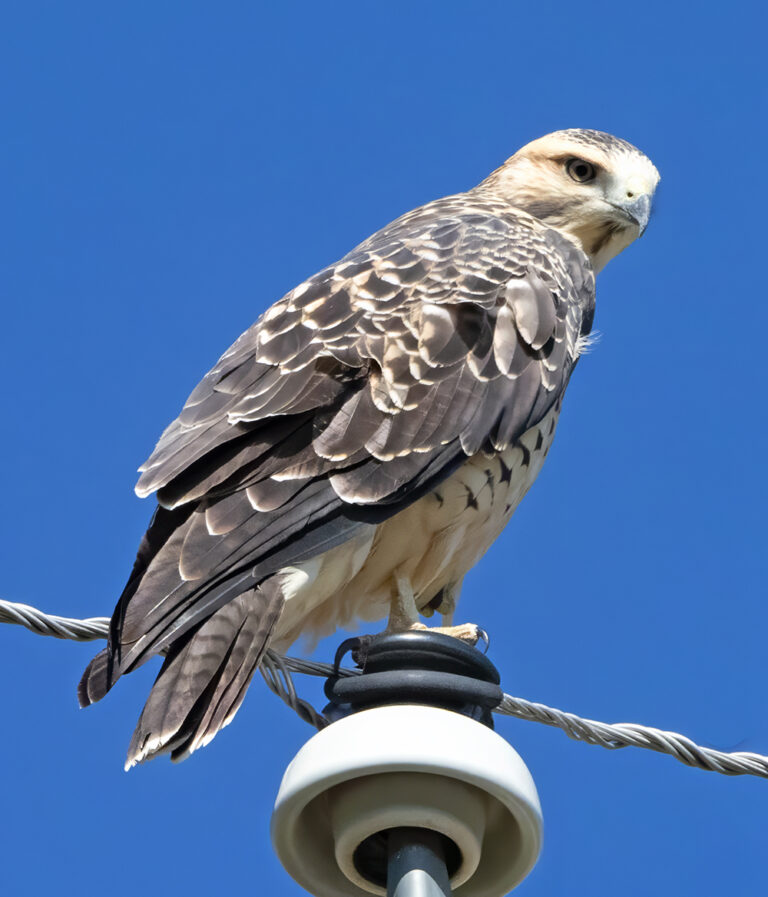
Young Swainson’s Hawks have light heads and lack the white bib of adults. They also have a lighter iris, which gradually darkens to deep brown as they age. Click here for larger image.
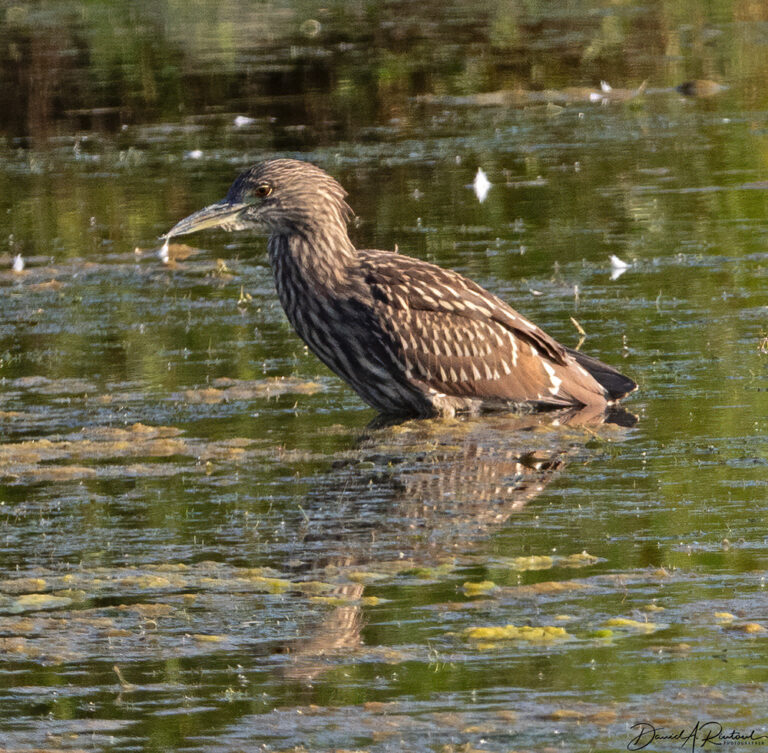
There were other juvenile birds hanging out in the refuge pools as well. This is a young Black-crowned Night-Heron (Nycticorax nycticorax), learning to forage and feed itself. The adult birds nearby were perfectly content to not be feeding this youngster. Click here for larger image.
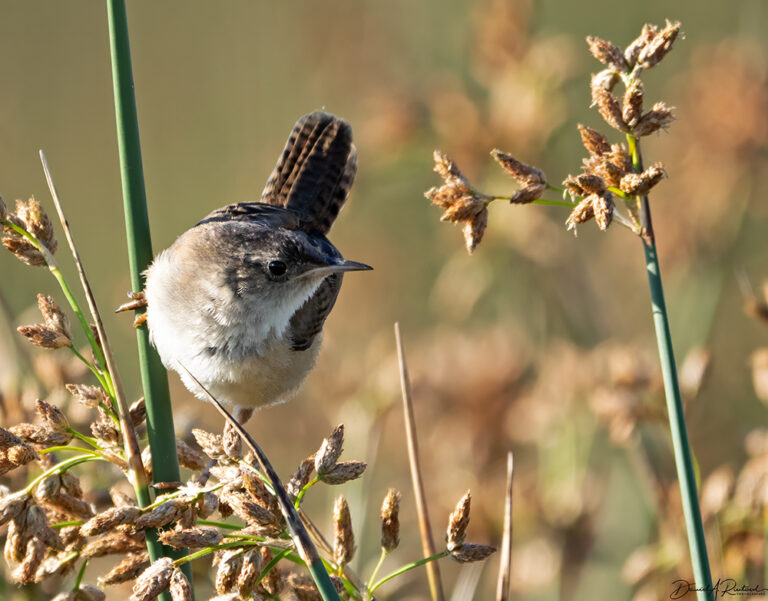
The marshes at the Monte Vista refuge usually have a large population of Marsh Wrens (Cistothorus palustris), and that was true for this trip. This one was scolding me in its best harsh language, because there were some youngsters nearby and I was apparently perceived as a threat. Click here for larger image.
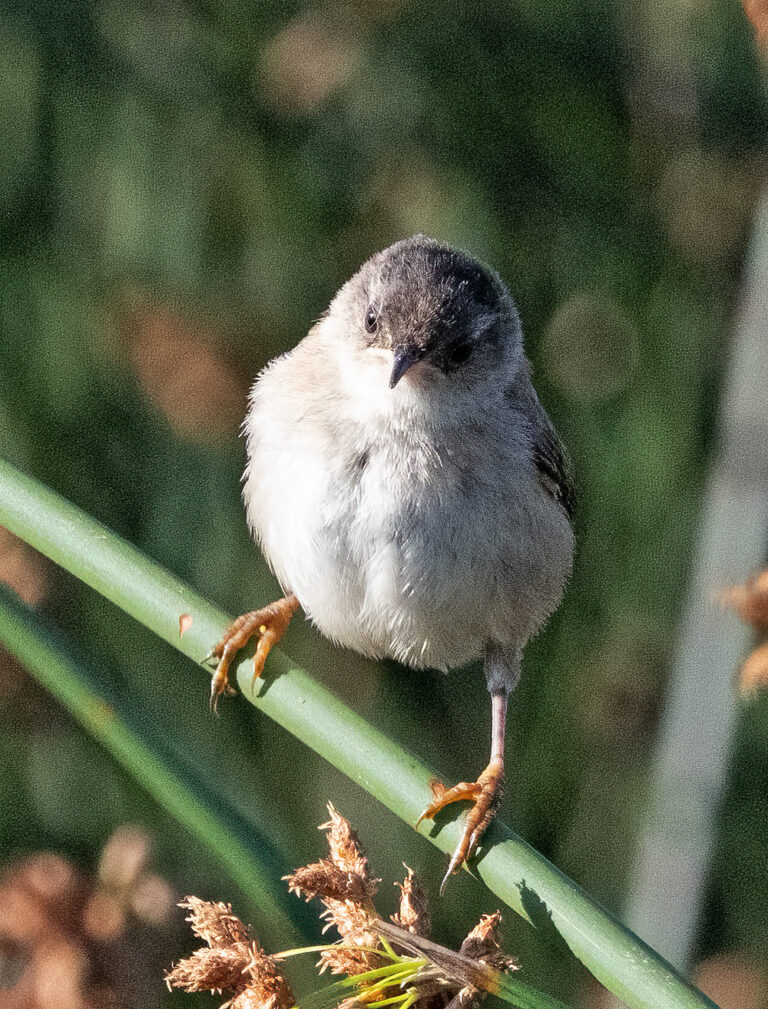
This is one of the youngsters, which can have mostly washed-out gray tones at that time of year. But even though this is not a good angle, you can see that it is already working on a good-looking white eyebrow. Click here for larger image.
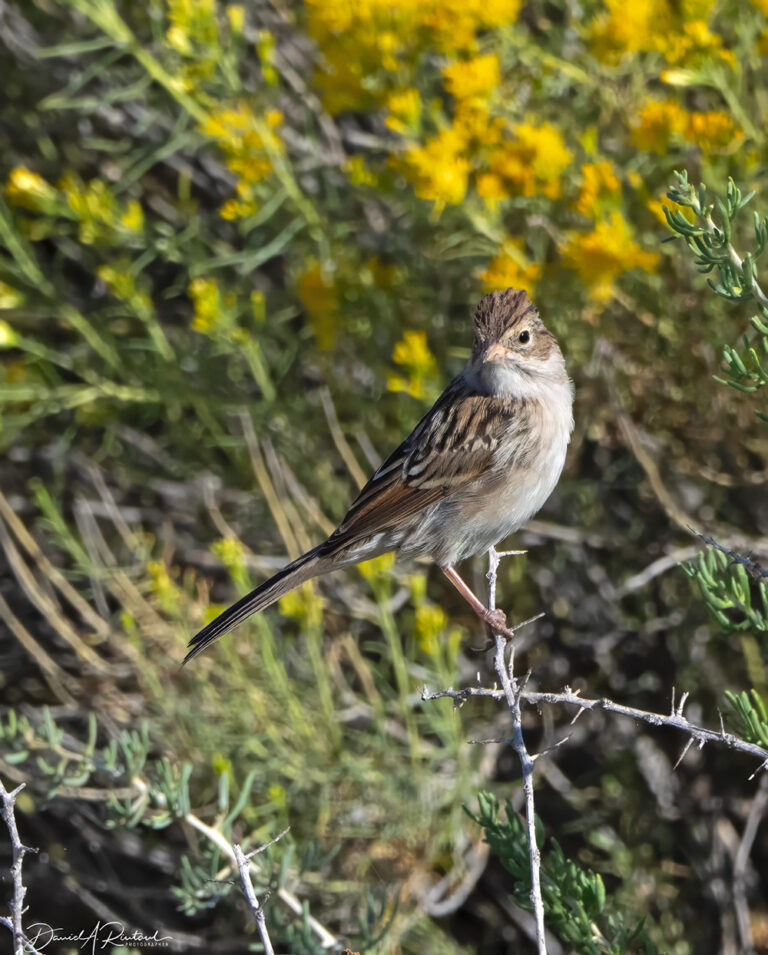
Even though these refuges are there because they have water and marshes, much of the habitat on the refuge could best be described as high desert. That means that it is a good place to look for one of our native sparrows, the Brewer’s Sparrow (Spizella breweri). Very similar to the Clay-colored Sparrow, which is found in more northern latitudes in the summer and fall, this mostly drab bird thrives in this flat dry sagebrush habitat. Nevertheless, it is often a target species for eastern US birders when they visit the western US. The uniformly gray-brown plumage underneath, a tiny bill and a modest white eye-ring (as well as range), help distinguish it from Clay-colored Sparrow. Click here for larger image.
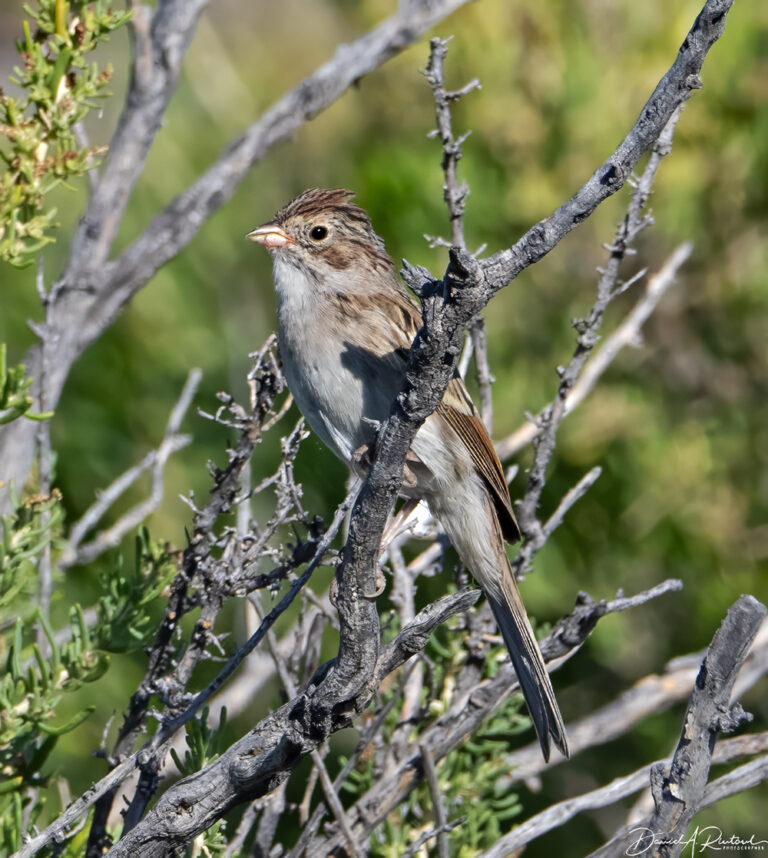
Here is another view of a Brewer’s Sparrow, showing the fine dark streaks on the gray nape, an even better field mark for this species, which is not found on Clay-colored Sparrows. Click here for larger image.
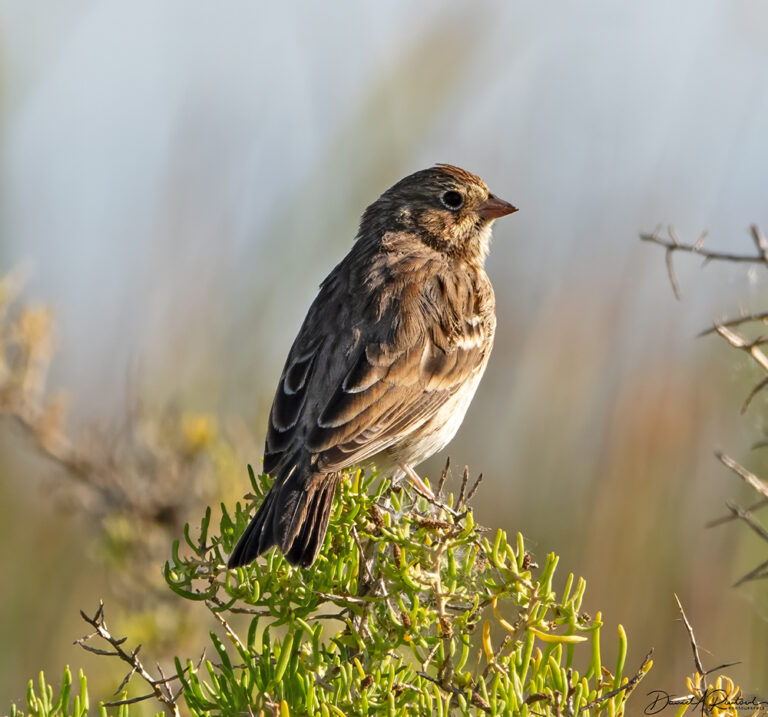
Another sparrow species with an even more prominent white eye-ring can also be found in this part of Colorado, the Vesper Sparrow (Pooecetes gramineus). The best ways to distinguish this species from the Brewer’s Sparrow above would be the brownish (rather than grayish) overall tones, larger bill, streaks on upper breast and down the flanks (not visible in this picture), and a more distinctly-marked facial pattern. But I confess, these two species are very similar, and when found in the same location, they can lead to befuddlement! Click here for larger image.
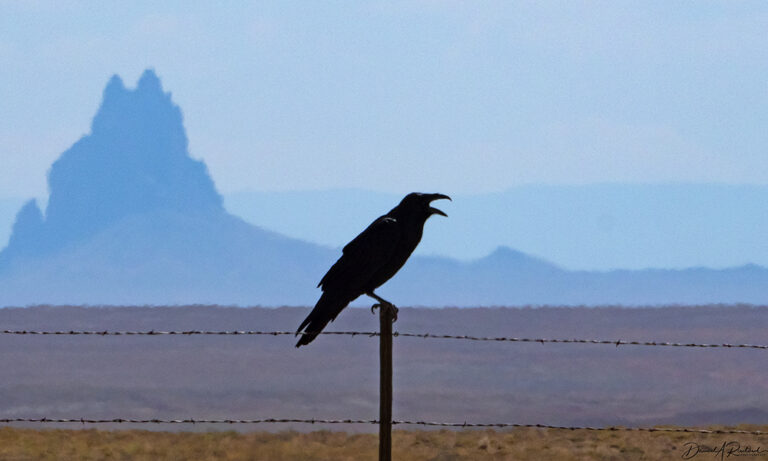
After my morning at the refuge, I headed west on US-160, one of my favorite “Blue Highways” (which remains one of my favorite books). In the Four Corners region, I captured this image of a Common Raven (Corvus corax), squawking from a fencepost with the New Mexico desert and the Shiprock formation in the greater distance. I may have shared it here in the past, but it remains one of my favorite images, and so I thought it needed to be seen again. Click here for larger image.

SteveinPHX
I’m bad at identifying a lot of sparrow types. Need to study more.
Thanks for the photos.
Betty
That last image is definitely one worth reposting.
Trivia Man
Those desert rest stops for birds are amazing. Normally Fish Springs, on the Pony Express trail west of SLC, does not allow camping. I was fortunate to join a geology-history-nature trip that stayed overnight there.
Excellent road – whats smaller than a “blue” highway?
Wag
Great shots, especially of the subtle differences between the varieties of little brown bids that my admittedly non-birder’s eye misses. Your shot is the raven has a Georgia O’Keefe feel to it. Excellent work, as always
Xavier
In one of his books, Least-Heat Moon recommends that a visitor who wants to observe America take US Highway 50 coast to coast, from Ocean City MD to where it used to end in San Francisco. Along the way it passes in front of the White House in DC, through Chase County KS (the subject of his book PrairyErth) and across Nevada on the loneliest highway. I’d also recommend US 191, from Douglas AZ to the Canadian border; along the way through the huge Morenci pit mine and the Navajo reservation, Moab, UT, Flaming Gorge, Teton and Yellowstone.
Miss Bianca
Geez, how many years have I lived here and never been to the Monte Vista wildlife refuge?? – looks like an awesome spot for birding!
Alison Rose
BIRBS!! I love how they always look like they’re annoyed someone is taking their picture.
Brachiator
Wrong thread. Sorry
StringOnAStick
I love how you give us the regional hints for various species and the context, it is so helpful for an amateur birder. I use my bird book though sometimes I get overwhelmed at the options, especially in the sparrows.
That last photo is calendar and framed large print worthy!
way2blue
Your last photo reminds one of why Edgar Allen Poe picked the Raven as the lead in a book meant to send shivers down the spine. Very evocative. Thanks as always for sharing your bird photos.
Yutsano
Here I was thinking that I would be loving the raptor pictures and you show us a beautiful corvid! I love me some raptor action but you show me a corvid and I’m enraptured.
A woman from anywhere (formerly Mohagan)
I love the pics of the Marsh Wrens. Thanks!
Albatrossity
@Xavier: US50 is indeed another great Blue Highway route. In addition to the attractions you mentioned, it also goes right through Garden City KS, passing just a couple blocks north of my boyhood home. Maybe someday there will be a plaque there :-)
munira
Great photo of the four corners region. I also like the blue highways book. Thanks.
mvr
Thanks for all of these. And yes that last image is stunning.